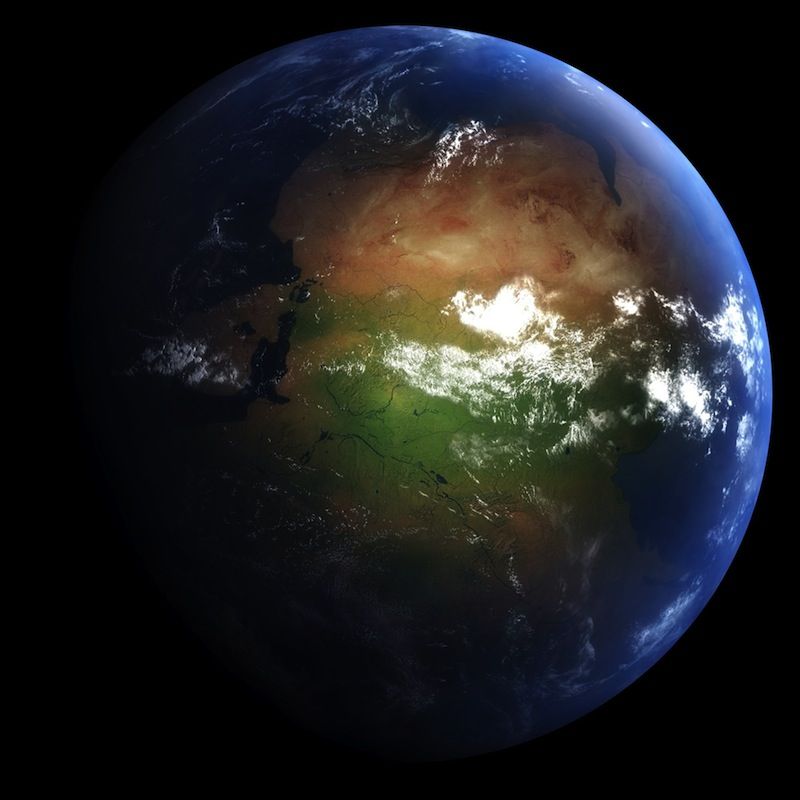
SAN FRANCISCO — Wild temperature swings and low oxygen conditions may have caused life on Earth to recover in fits and starts from the planet's worst extinction, new research suggests.
After the end-Permian extinction, in which most life on Earth perished, life rebounded only to be blasted again by hostile environmental conditions.
"It was a series of rebounds and resets," said study co-author Carlie Pietsch, a doctoral candidate in earth sciences at the University of Southern California in Los Angeles, who presented her findings here at the 47th annual meeting of the American Geophysical Union. [Wipe Out: History's Most Mysterious Extinctions]
Mass die-off
Most geologists say the culprit in Earth's biggest extinction was a series of cataclysmic eruptions, called the Siberian Traps, that occurred about 252 million years ago. The eruptions, which lasted about 1 million years, created a massive lave left behind by that flow now spans 720,000 cubic miles (3 million cubic kilometers).
The eruptions spewed noxious sulfur and carbon dioxide into the atmosphere, leading to extreme heating and rapid cooling. Sulfur dioxide in the atmosphere created rain so acidic it was comparable to "undiluted lemon juice," researchers told Live Science.
A few tenacious creatures survived this hellscape, but not many. More than 96 percent of sea life and 70 percent of terrestrial animals were wiped out.
Sign up for the Live Science daily newsletter now
Get the world’s most fascinating discoveries delivered straight to your inbox.
Rebounds and resets
Pietsch and her doctoral advisor, David Bottjer, an earth scientist at the University of Southern California, wanted to understand how life on Earth responded to this catastrophe.
The researchers looked at fossils found in the Dolomite Mountains in Italy. In the period after the extinction, sediments there called the Werfen Formation formed part of the seafloor of the primeval Tethys Ocean.
"In the first 500,000 years [after the die-off], the animals were not happy," Pietsch told Live Science.
The fossil record is dominated by "disaster taxa," or opportunistic life forms that take over when everything else has died, Pietsch said.
All the life forms, such as the extinct scalloplike creature Claraia, seemed to be clinging to the surface of the seafloor, not burrowing down as they would if there were enough oxygen in the seabed to support life, Pietsch said.
About 1 million years after the extinction, life seems to have rebounded somewhat: There's a greater diversity of species, and the fossil traces show more-complicated branching and burrowing tunnels. These suggest animals could survive deeper into the seabed, the researchers said.
After that, however, the recovery took two steps forward and one step back. Fossils from California, in what was once the Panthalassa Ocean, decreased in size, and burrowing traces disappeared, only to reappear later.
Pietsch hypothesized that the low atmospheric oxygen of the time meant that swaths of low oxygen regions in the ocean, or dead zones, moved up the water column. Species then reacted to those rising dead zones by traveling up to shallower depths closer to shore, before moving deeper again when conditions improved.
Past studies of traces of carbon and oxygen isotopes (elements with different numbers of neutrons) in the rocks tie these periods of limited biodiversity to periods of low oxygenation or low temperature.
Still, by a few of million years after the mass die-off, the oceans hosted a fairly diverse, complex web of creatures, though major players such as sea urchins were still absent, Pietsch said.
Modern implications
The findings have modern-day implications, Pietsch said.
Already, a huge dead zone sometimes upwells in the waters off California, Oregon and Washington, with piles of dead sea life washing ashore. And conditions are getting worse.
"The amount of CO2 we're putting into the atmosphere and the rate at which the ocean is warming is more rapid than the rate at which the Earth warmed in this interval," Pietsch said.
Understanding how life adapted to the end-Permian catastrophe could help conservationists plan their next moves, she said.
"Are there places we should give up on? Are there places we should try to protect?" Pietsch said.
Follow Tia Ghose on Twitter and Google+. Follow Live Science @livescience, Facebook & Google+. Originally published on Live Science.

Tia is the managing editor and was previously a senior writer for Live Science. Her work has appeared in Scientific American, Wired.com and other outlets. She holds a master's degree in bioengineering from the University of Washington, a graduate certificate in science writing from UC Santa Cruz and a bachelor's degree in mechanical engineering from the University of Texas at Austin. Tia was part of a team at the Milwaukee Journal Sentinel that published the Empty Cradles series on preterm births, which won multiple awards, including the 2012 Casey Medal for Meritorious Journalism.